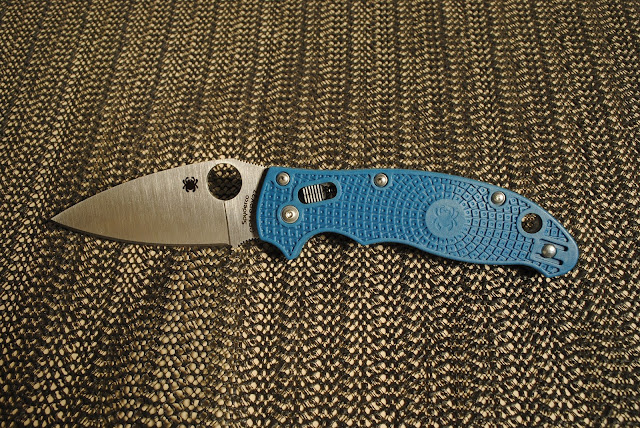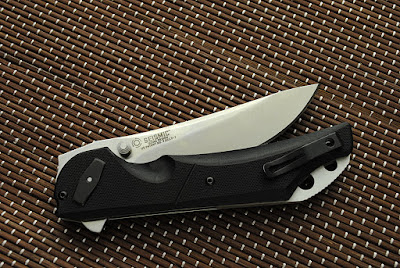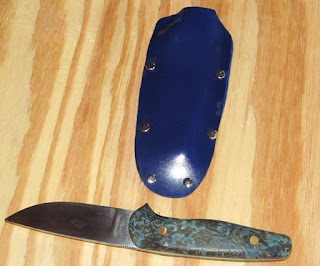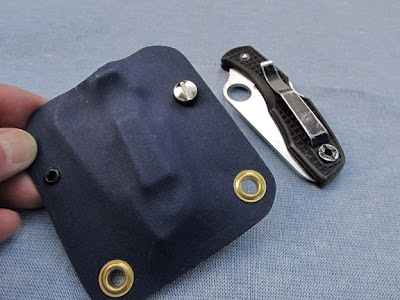Spyderco likes to play with steels. Companies like Crucible encourage that. Each knife company will find what they think is the best edge geometry, hardness, heat treatment and machining for their knives. So for Crucible it’s like having dozens of development labs. Companies like it because the steel junky habit is hard to shake and every steel promises to be the ultimate knife steel, until the next.
People like myself benefit.
While 440C stainless is a good steel, there are much better, newer
steels dragging the market forward. I’ll
get a better knife out of it, so will you.
 |
| Spy27 was first introduced Jan 2020 |
Working with Crucible® Industries, Spyderco has produced a
powered metal steel called CPM SPY27. Powder metals produce small grain size
and more uniform distribution of alloying elements. Both are important for quality steel. Let’s peak inside the hood.
- Carbon 1.25%
- Chromium 14%
- Niobium 1%
- Molybdenum 2%
- Vanadium 2%
- Nitrogen 0.1%
- Cobalt 1.5%
Chromium, niobium and vanadium form small, hard, dense
carbides that help stabilize iron grains against deformation. But if too much chromium is used to form
carbides, the corrosion resistance suffers.
Adding a little nitrogen allows for the formation of nitrides, which are
also very small and very hard. All of
this is combined with a specific and I’m sure proprietary heat treatment.
The Para 3 has been come a very popular knife. The handle is a fiberglass reinforced nylon is stable and very resistant to solvent. The bidirectional grip provides a solid locking grip in wet and slippery conditions knives often find themselves in. The clip holds the knife in your pocket tip up, (my favorite), and is reversible for left or right carry.
That’s a feature I like!
 |
| Bi-directional grip grabs the hand |
Look, the blade is just under 3 inches long and open the knife is almost 7.25 inches. Why almost? Face it America, the world uses metric so that’s what products are scaled to.
The knife weighs in at 2.4 ounces and it so trim you’ll
forget it is in your pocket until you need it.
The Spy27 steel blade is a satin flat grind favorite by
sharpeners everywhere. The locking
mechanism is Spyderco’s compression lock which I also like. Liner locks are fine, but I prefer to keep my
skin out of the path of closing knives blades.
There was a time when Spyderco made their new experimental
production (I know – contradicting terms) models with a blue handle. In any case this blue FRN handle Para 3 is
made in Golden, Colorado.
Frankly the thumb hole is a generous one half inch in diameter but the knife doesn’t open quite as easy as I remember the early Delicas and Enduras. There doesn’t appear to be lubricated bronze spacers to ease the blade opening, but still I like the knife. I pick up the knife and the knife grips me back. The jimping on the back of blade is aggressive and I like that too! The Para 3 Lightweight has good looks, but it isn’t designed to live its life in a pocket. It is meant to work in your hand. It isn’t my knife to use and try, but you can find one at it’s minimum advertised price of $140 just about anywhere.
Spy27 could be the new base steel at Spyderco. Just sayin’ you might want to get in on the
ground floor.


























